Peugeot 3008 vs Dacia Bigster – Suorituskyky, toimintamatka ja kulutus vertailussa
Molemmilla malleilla on vahvuutensa – mutta kumpi sopii sinulle paremmin?
Vertaa suorituskykyä, kulutusta, hintaa ja tiloja suoraan: Peugeot 3008 vai Dacia Bigster?
The automotive market is constantly evolving, with manufacturers striving to provide vehicles that reflect both modern technology and consumer preferences. Two contenders in the SUV segment that have garnered attention are the Peugeot 3008 and the Dacia Bigster. This article aims to compare these two models based on various technical aspects and innovations, helping potential buyers make an informed decision.
Design and Dimensions
Starting with design, the Peugeot 3008 boasts a strikingly modern aesthetic with a captivating front fascia and sleek lines that enhance its aerodynamic profile. Measuring 4542 mm in length, 1895 mm in width, and standing at 1641 mm high, the 3008 offers a commanding presence on the road.
In contrast, the Dacia Bigster presents a rugged yet stylish look, appealing to those seeking a more practical SUV. Slightly longer at 4570 mm, and wider at 1813 mm, the Bigster stands taller at 1705 mm, giving it a more robust stance. Both vehicles feature five doors and provide ample space for five occupants.
Performance and Engine Options
When it comes to performance, the Peugeot 3008 presents a range of engine options, including petrol mild hybrid, plug-in hybrid, and full electric variants. The power output varies from 136 HP to a robust 231 HP, catering to various driving styles. The most powerful version can accelerate from 0 to 100 km/h in just 8.4 seconds. Moreover, it boasts impressive fuel consumption figures, achieving as low as 5.7 L/100 km.
The Dacia Bigster, on the other hand, offers a more modest performance profile with power outputs ranging from 130 HP to 155 HP. While it lacks the higher-performance options of the 3008, it remains competitive with a respectable 0-100 km/h acceleration time of about 9.7 seconds. With an even better fuel consumption of as low as 4.7 L/100 km, the Bigster leans into efficiency, making it an attractive choice for eco-conscious consumers.
Technology and Innovations
In terms of technology, the Peugeot 3008 shines with its advanced infotainment system, featuring a large touchscreen interface, smartphone connectivity, and a suite of driver-assistance technologies. The car includes features such as adaptive cruise control, lane-keeping assist, and an impressive digital cockpit that enhances the driving experience.
Meanwhile, the Dacia Bigster, building on its reputation for affordability, includes a functional infotainment system, although it may not match the sophistication of the 3008's offerings. Nevertheless, the Bigster incorporates essential connectivity features and sufficient driver-assistance systems, making it a competent entrant in the market.
Interior and Comfort
The interior of the Peugeot 3008 is renowned for its high-quality materials and ergonomic design, providing a comfortable and upscale environment for passengers. With a trunk capacity of 520 liters, it offers ample storage space, making it ideal for family outings or road trips.
Dacia Bigster impresses with its spacious interior, offering a trunk capacity of up to 667 liters. While the materials may not exude luxury as found in the 3008, the layout is practical and user-friendly, appealing to families looking for functionality over flair.
Price and Value
Pricing can heavily influence a purchase decision, and the Dacia Bigster typically offers a more budget-friendly option compared to the Peugeot 3008. While the 3008 includes a host of refinement and performance features, it also comes with a higher price tag, reflecting its position in the market as a premium SUV.
On the contrary, the Bigster focuses on providing value for money, making it a formidable option for those seeking a reliable and spacious SUV without breaking the bank.
Final Thoughts
In conclusion, the Peugeot 3008 and Dacia Bigster cater to distinct segments of the market. The 3008, with its performance, modern design, and advanced technology, is ideal for buyers seeking luxury and innovation. Conversely, the Bigster champions practicality, efficiency, and value, appealing to those who prioritize function and affordability. Ultimately, the choice between these two SUVs will depend on individual preferences and requirements in the ever-evolving automotive landscape.
Tässä mennään yksityiskohtiin: tekniset erot tarkemmin
Kustannukset ja kulutus: Hinta ja tehokkuus ovat usein ensimmäiset valintakriteerit auton ostossa. Tässä näkyy, kumpi malli on pitkällä aikavälillä edullisempi – tankatessa, ladatessa tai hankintahinnassa.
Dacia Bigster on hinnassa selvä edullisempi – sen lähtöhinta on 24000 €, kun taas Peugeot 3008 maksaa 41000 €. Ero on noin 17010 €.
Polttoaineenkulutuksessa näkyy ero: Peugeot 3008 kuluttaa 0.90 L ja on siten ratkaiseva taloudellisempi kuin Dacia Bigster, jonka kulutus on 4.70 L. Ero on noin 3.80 L /100 km.
Moottori ja suorituskyky: Moottorin alta paljastuu, kumpi malli on urheilullisempi ja kiihtyy paremmin.
Moottoritehossa Peugeot 3008 on merkittävä etulyöntiasemassa – 325 hv verrattuna 155 hv:een. Ero on noin 170 hv hv.
Kiihdytyksessä 0–100 km/h Peugeot 3008 on merkittävä nopeampi – 6 s vs. 9.70 s. Ero on noin 3.70 s sekuntia.
Huippunopeudessa Peugeot 3008 on pienessä määrin edellä – se yltää 220 km/h:een, kun taas Dacia Bigster saavuttaa 180 km/h. Ero on noin 40 km/h.
Vääntömomentissa näkyy myös ero: Peugeot 3008 vetää vakuuttava voimakkaammin, 511 Nm verrattuna 230 Nm:een. Eroa on noin 281 Nm.
Tila ja käytännöllisyys: Sisätilat, tavaratila ja kantavuus ratkaisevat auton arjen käytettävyyden. Mukavuus ja joustavuus ovat avainasemassa.
Molemmissa autoissa on tilaa 5 henkilölle.
Omapainossa Dacia Bigster on jonkin verran kevyempi – 1425 kg verrattuna 1648 kg:een. Painoero on noin 223 kg.
Tavaratilan koossa Dacia Bigster tarjoaa ilmeinen enemmän – 667 L verrattuna 520 L:een. Ero on noin 147 L.
Maksimikantavuudessa Dacia Bigster pärjää ilmeinen paremmin – jopa 1937 L, noin 457 L enemmän kuin Peugeot 3008.
Maksimikantavuus on sama – molemmat voivat kuljettaa 467 kg.
Kokonaisuudessaan Peugeot 3008 on antaa kilpailijalle vähän mahdollisuuksia ja nappaa näin DriveDuel Champion -tittelin.
Se vakuuttaa tasapainoisemmalla kokonaisuudellaan ja on käytännöllisempi kumppani arjessa.
Peugeot 3008
Peugeot 3008 on saanut paljon kiitosta modernista muotoilustaan ja tyylikkäästä sisustuksestaan. Auto yhdistää gleamin ja käytännöllisyyden, mikä tekee siitä erinomaisen valinnan sekä perheille että kaupunkiautoilijoille. Sen innovatiiviset ominaisuudet tarjoavat miellyttävän ajokokemuksen, joka vie tunnetta autoilusta uudelle tasolle.
Tiedot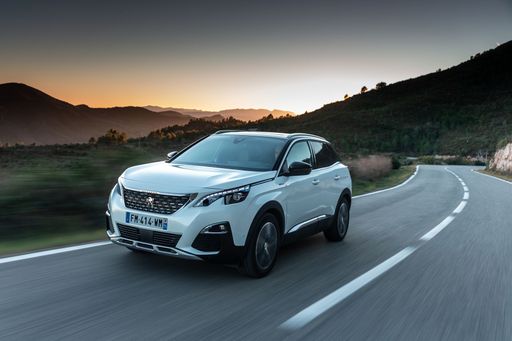 @ media.stellantis.com
@ media.stellantis.com
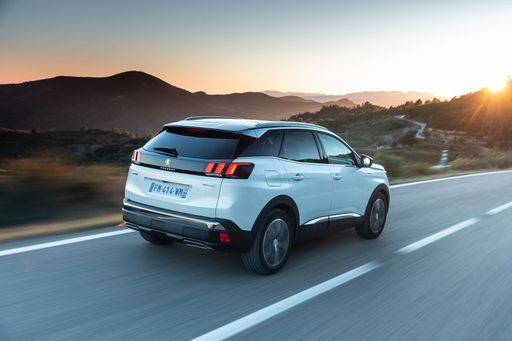 @ media.stellantis.com
@ media.stellantis.com
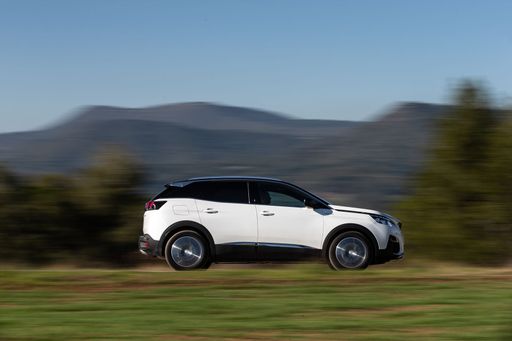 @ media.stellantis.com
@ media.stellantis.com
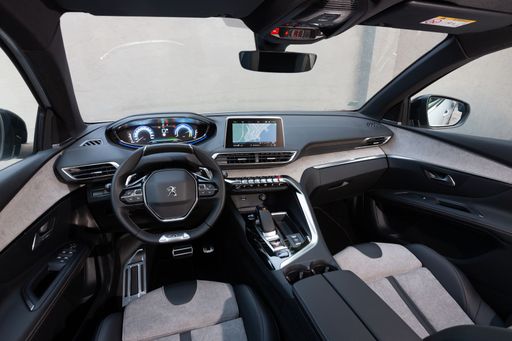 @ media.stellantis.com
@ media.stellantis.com
Dacia Bigster
The Bigster is poised to redefine the SUV segment with its bold design and spacious interior, catering to the needs of both families and adventure seekers alike. Emphasizing sustainability and practicality, this model reflects a modern approach to automotive engineering, making it a compelling choice for environmentally conscious drivers. With its striking presence on the road, the Bigster not only captures attention but also embodies a new era of versatile mobility.
Tiedot @ media.renault.at
@ media.renault.at
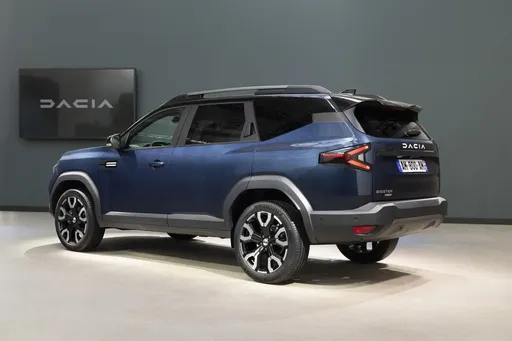 @ media.renault.at
@ media.renault.at
 @ media.renault.at
@ media.renault.at
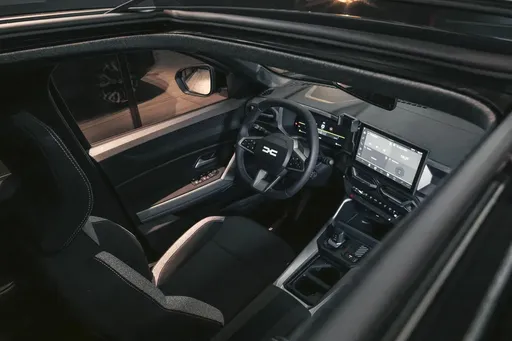 @ media.renault.at
@ media.renault.at
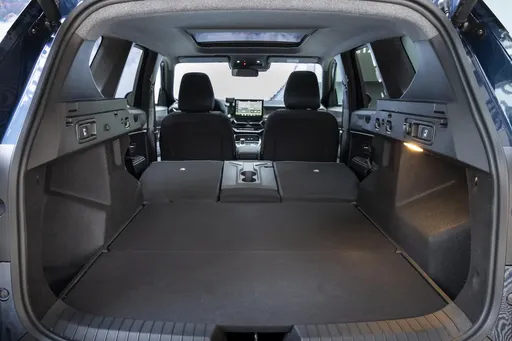 @ media.renault.at
@ media.renault.at

|

|
|
|
|
Kustannukset ja kulutus |
|
|---|---|
|
Hinta
41000 - 60000 €
|
Hinta
24000 - 31000 €
|
|
Kulutus L/100km
0.9 - 5.4 L
|
Kulutus L/100km
4.7 - 7.1 L
|
|
Kulutus kWh/100km
16.9 - 17.8 kWh
|
Kulutus kWh/100km
-
|
|
Sähköinen toimintasäde
85 - 698 km
|
Sähköinen toimintasäde
-
|
|
Akun kapasiteetti
0.4 - 96.9 kWh
|
Akun kapasiteetti
-
|
|
CO2
0 - 121 g/km
|
CO2
106 - 137 g/km
|
|
Polttoainesäiliön tilavuus
55 L
|
Polttoainesäiliön tilavuus
50 - 55 L
|
Mitat ja kori |
|
|---|---|
|
Kori
SUV
|
Kori
SUV
|
|
Istuimet
5
|
Istuimet
5
|
|
Ovet
5
|
Ovet
5
|
|
Omamassa
1648 - 2337 kg
|
Omamassa
1425 - 1547 kg
|
|
Tavaratila
470 - 520 L
|
Tavaratila
510 - 667 L
|
|
Pituus
4542 mm
|
Pituus
4570 mm
|
|
Leveys
1895 mm
|
Leveys
1813 mm
|
|
Korkeus
1641 mm
|
Korkeus
1705 mm
|
|
Maksimi tavaratila
1430 - 1480 L
|
Maksimi tavaratila
1813 - 1937 L
|
|
Kantavuus
383 - 467 kg
|
Kantavuus
383 - 467 kg
|
Moottori ja suorituskyky |
|
|---|---|
|
Moottorityyppi
Plug-in hybridi, Sähkö, Bensiini MHEV
|
Moottorityyppi
Bensiini MHEV, Täyshybridi, Kaasu (LPG)
|
|
Vaihteisto
Automaatti
|
Vaihteisto
Manuel, Automaatti
|
|
Vaihteiston tyyppi
Kaksoiskytkin automaatti, Alennusvaihteisto
|
Vaihteiston tyyppi
Manuaalivaihteisto, Automaattinen manuaalivaihteisto
|
|
Vetotapa
Etuveto, Neliveto
|
Vetotapa
Neliveto, Etuveto
|
|
Teho hv
145 - 325 hv
|
Teho hv
130 - 155 hv
|
|
Kiihtyvyys 0-100 km/h
6 - 10.2 s
|
Kiihtyvyys 0-100 km/h
9.7 - 11.2 s
|
|
Huippunopeus
170 - 220 km/h
|
Huippunopeus
180 km/h
|
|
Vääntömomentti
230 - 511 Nm
|
Vääntömomentti
230 Nm
|
|
Sylinterien lukumäärä
3 - 4
|
Sylinterien lukumäärä
3 - 4
|
|
Teho kW
107 - 239 kW
|
Teho kW
96 - 115 kW
|
|
Iskutilavuus
1199 - 1598 cm3
|
Iskutilavuus
1199 - 1799 cm3
|
Yleiset |
|
|---|---|
|
Mallivuosi
2024 - 2025
|
Mallivuosi
2025
|
|
CO2-tehokkuusluokka
B, A, D
|
CO2-tehokkuusluokka
E, D, C
|
|
Merkki
Peugeot
|
Merkki
Dacia
|
Millaisia voimalinjoja Peugeot 3008:ssa on saatavilla?
Mallia tarjotaan Etuveto tai Neliveto-versiona.
Näytetyt hinnat ja tiedot ovat arvioita, jotka perustuvat Saksan listahintoihin, ja voivat vaihdella maittain. Nämä tiedot eivät ole oikeudellisesti sitovia.
